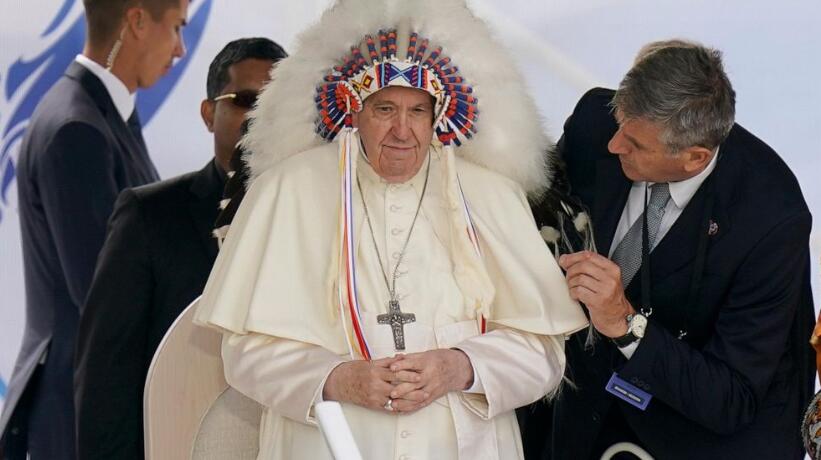The Vatican Museums has officially reopened its African and American ethnographic collections by showcasing intricately restored Rwandan raffia screens
VATICAN CITY — The Vatican Museums officially reopened its African and American ethnographic collections Thursday by showcasing intricately restored Rwandan raffia screens that were sent by Catholic missionaries to the Vatican for a 1925 exhibit.
The display at the Anima Mundi Ethnological Museum featured a scientific presentation of the restoration process as well as the research that preceded it, with consultations with Rwanda’s own ethnographic museum, a UCLA graduate student and Belgium’s Royal Museum for Central Africa. It came as ethnographic museums in Europe and North America are grappling with demands from Indigenous groups and former colonies to return artifacts dating from colonial times.
The Rev. Nicola Mappelli, curator of the Anima Mundi museum, declined to comment on calls for restitution of the Vatican’s own ethnographic holdings, saying these were questions for the museum leadership. Speaking to The Associated Press during a visit to the new exhibit, he noted that the Vatican last year returned three mummies to Peru and a human head to Ecuador in 2017.
The museum director, Barbara Jatta, didn’t refer to the issue in her remarks at the opening, emphasizing however what she said was the Anima Mundi’s commitment to transparency and “dialogue with different cultures.”
She said the unveiling of the Rwandan panels was a moment to celebrate the reopening of the African and American section of the museum as well as the 50th anniversary of the transfer of the entire collection into the Vatican Museums itself.
The issue of the Vatican’s ethnographic collection came into the spotlight last year, when Indigenous groups from Canada came to the Vatican to receive an apology from Pope Francis for Canada’s church-run residential school system.
Canada’s Truth and Reconciliation Commission has said the policy of forcibly removing Indigenous children from their families in a bid to assimilate them into Christian, Canadian society amounted to “cultural genocide.” The First Nations, Metis and Inuit delegations visited the Anima Mundi and were shown several Indigenous items in the collection, and representatives later said they wanted them back, or at the very least to have access to them so Indigenous researchers could study them.
The Vatican has long insisted that the basis of its ethnographic collection stemmed from “gifts” to Pope Pius XI, who in 1925 staged a huge exhibit in the Vatican gardens to celebrate the church’s global reach, its missionaries and the lives of the Indigenous peoples they evangelized. Catholic missionaries around the globe sent him artifacts, but some researchers today question whether Indigenous peoples were really able to consent to such “gifts” given the power dynamics of the time.
The informational labels on the new exhibits emphasize the Vatican’s view. The Canada label, for example, reads: “There is a long tradition of gifts sent by the Indigenous peoples of Canada to the popes,” noting that a headdress in the exhibit was given to Francis during his 2022 trip to Canada by Chief Wilton Littlechild.
